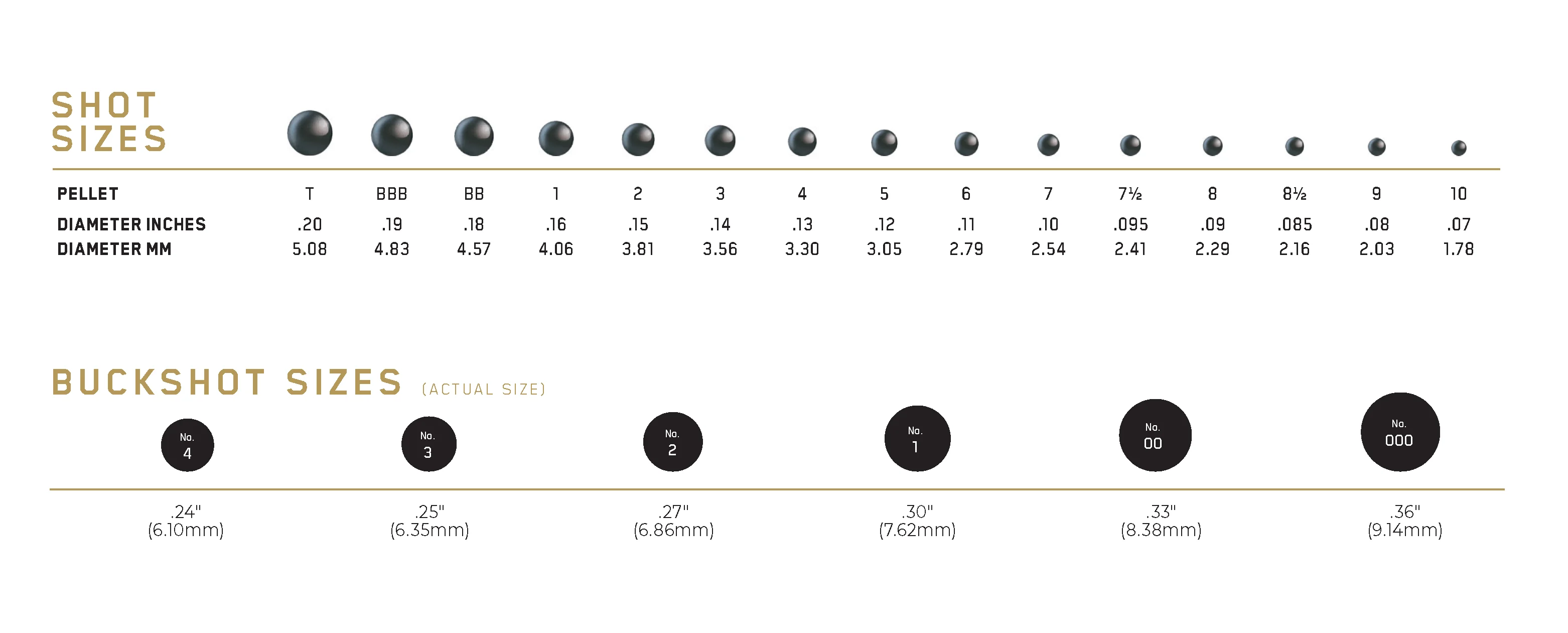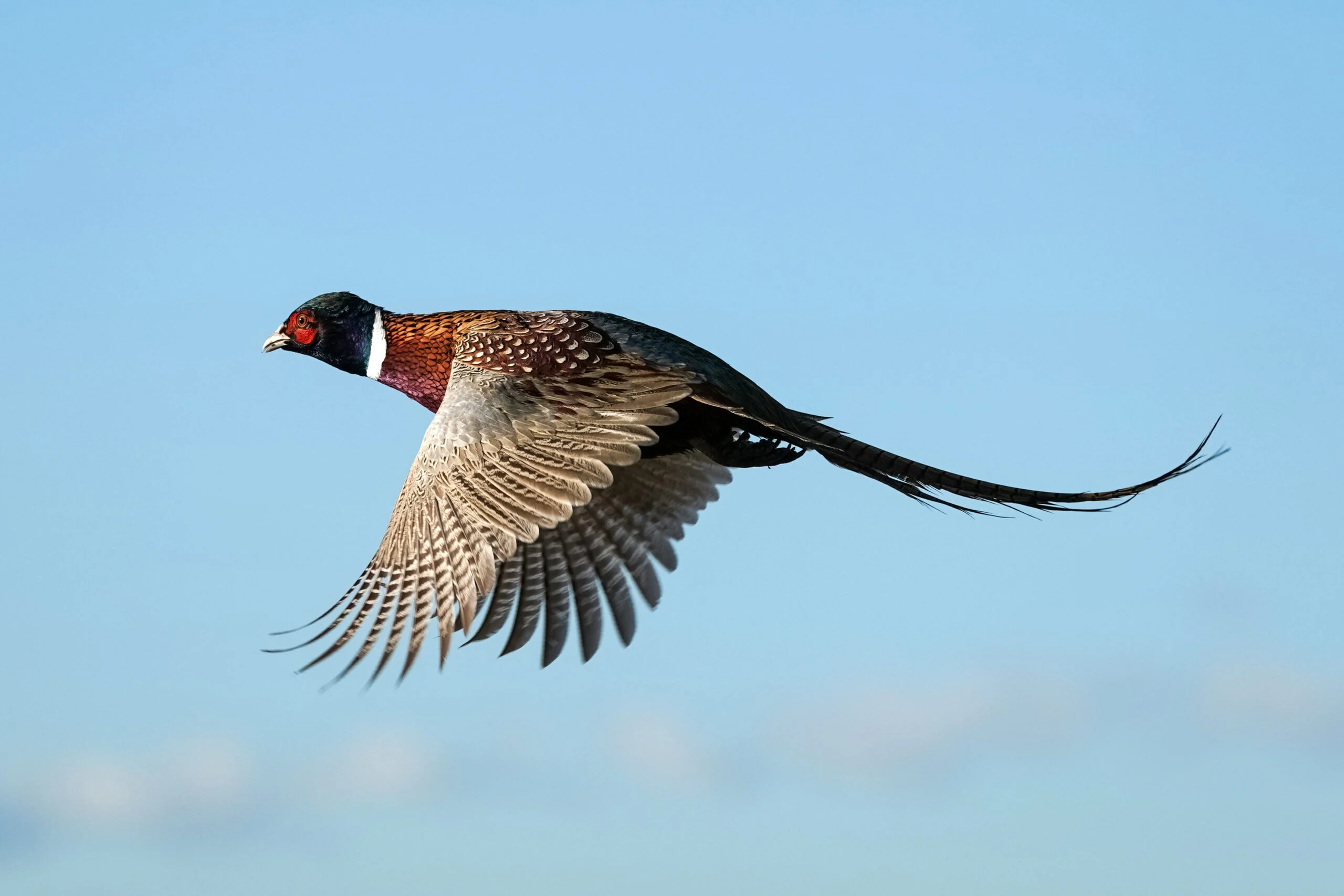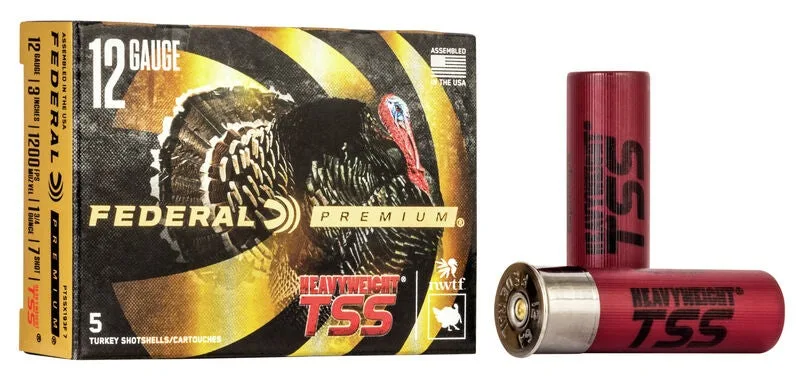_We may earn revenue from the products available on this page and participate in affiliate programs. Learn more ›
_
The terms “buckshot” and “birdshot” are often used interchangeably by casual shotgunners. But even though both are pellets fired from shotguns they are very different things. Generally speaking, the buckshot vs birdshot question has a couple of very easy answers. First, buckshot is big, and birdshot is small. Second—again generally—buckshot is for, well, bucks. And birdshot is for—you guessed it—birds.
A shotgun loaded with buckshot becomes a formidable short-range arm for medium-sized game and for home defense. That same shotgun, loaded with birdshot, can drop a drop a 20-pound tundra swan or a 4-ounce mourning dove. Here’s everything you need to know about buckshot vs birdshot.
Buckshot vs Birdshot Nomenclature
Shot pellets come in sizes from 12 to OOO. The larger the number, the smaller the pellet. Once you reach 1 shot, the terminology changes, first to letters for the very largest birdshot (B, BB, BBB, T and F), then back to numbers for buckshot. No one said shot nomenclature had to make sense, by the way. Twelve shot, the smallest size, measures approximately .060” in diameter. Triple-ought (000) buck measures .36”. Every one of those shot sizes has a purpose (and you can read all about which size is best for which critter here
), although in truth, there is a lot of overlap between one size and the next.

This chart shows birdshot sized 10-T and buckshot sizes 4-000. Courtesy of Federal Ammunition
Incidentally, there are slight differences in pellet diameter and in nomenclature among American, English, Australian, and European shot sizes. Also, where we use numbers and zeros for our buckshot, overseas buck goes by “SG,” “SSG,” “SSSG” and “LG” (small, small small, small small small, and large) with “G” being an abbreviation for “grapeshot,” a holdover from the days of muzzleloading cannons when round balls called grapeshot were loaded into cannons to stop infantry or cavalry at close range.
Uses for Buckshot

Where legal, buckshot is effective on running deer at close range. Adobe Stock
Buckshot, to again belabor the obvious, is synonymous with deer hunting. Deer are thin-skinned animals, making them vulnerable to large shot pellets, and in any type of hunting when deer are running, as in hunting with hounds, or driving deer, buck shot can be more effective than a slug or rifle bullet at close ranges.
Buckshot can kill reliably to 40 yards in most guns, and to 50 in some cases. Because there are as few as nine pellets in some buckshot loads, the patterns quickly become too thin to kill reliably as ranges increase and pellets continue to spread. Smaller buckshot, like 4 buck, can a good choice for predators like coyotes. A middle-of-the-road choice, like No. 1 buckshot
, splits the difference.
African hunters have traditionally preferred SSG buckshot (the equivalent of our 00) for the dangerous job of tracking wounded leopards in heavy cover. Well-camouflaged, fast, and armed with sharp teeth and claws, leopards are dangerous, but they normally weigh only a little over 100 pounds. At close range, buckshot is much more effective on a charging leopard than is a rifle.
Finally, buckshot has long been a favorite load for home defense, law enforcement, and military shotguns. In the first World War, US Army GIs used Winchester pump guns and buckshot so effectively that the German government filed a protest against their use. The standard 12-gauge load of 00 buck pellets shoot nine .34 caliber projectiles with every pull of the trigger. Buckshot is still used in combat shotguns today.
Uses for Bird Shot

Smaller shot size means more pellets, which makes it easier to hit flying targets. Adobe Stock
Bird shot isn’t just for birds. Any pellet from size F, about .22 caliber to 12 shot (.060”) counts as bird shot. At the small end, 12 shot is loaded into .22 LR cartridges as close-range snake rounds. Ten shot is a staple of card-shooting competitions, in which shooters vie to see who can put the most holes in a playing card or some other target. At 850 pellets per ounce, 10 shot can make a lot of holes.
Nine, 8½, 8, and 7½ shot, as well as steel 6 and 7, are used for clay target shooting and in 3-gun competition. The small pellets have high enough pellet counts to shoot the dense patterns needed to break clays consistently. Most gun clubs limit target shooting to shot size 7½ lead or 6 steel and smaller for safety reasons, as the small shot doesn’t travel as far as bigger pellets. All of those shot sizes are also effective on small game birds like mourning doves, woodcock, and grouse.
The larger the bird, the larger the pellets you need to kill it cleanly. Pheasant hunters, for example, commonly step up to 6- or even 5-shot loads. The exception to this rule is the wild turkey, a bird that can weigh 25 pounds. Because turkeys are so big, the most reliable way to kill them is with such a dense swarm of small pellets that you are assured of a few strikes to the skull and neck vertebrae. Everything from lead 5-shot to TSS 9-shot if effective on turkeys.
The very largest sizes of bird shot, which go by the letter designations of B, BB, BBB, T, and F are all used both for large birds, primarily Canada geese, and they can double up as effective loads for foxes and coyotes. Mid-size bird shot is also effective for squirrels, rabbits, and hares.
Finally, although most people use buckshot for home defense, a load of small bird shot such as 7½ is an alternative for people who live with neighbors nearby that might be endangered by buckshot penetrating walls. Small shot is devastating at across-the-room distances, but is much less able to retain energy to go through walls.
Buckshot vs Bird Shot Materials

Tungsten Super Shot is far denser than lead, allowing you to use smaller shot sizes for denser patterns while retaining the equivalent pellet energy of larger lead shot.
One major difference between buckshot and birdshot is that while the vast majority of buckshot loads contain lead pellets, birdshot is made both in lead and in a variety of other shot materials in order to comply with non-toxic shot requirements where they are mandated.
Those materials vary in density, so the right pellet size for a specific use can vary a great deal depending on what type of pellets you’re shooting. Steel, the most common non-toxic shot material, is much lighter than lead. Bismuth lies between steel and lead in density. HeviXII is denser than lead, and Tungsten Super Shot is by far the densest (and most by far the most expensive, because tungsten is a scarce metal) pellet you can buy. The denser the pellet, the smaller the shot size you can choose and still get the same pellet energy. As a rough guide, a steel 2 is equivalent to bismuth 3, a lead 4, a HeviXII 5 or a TSS 9. Each time you go to a smaller shot size, you get the benefit of more pellets per ounce.
Choosing Buckshot and Birdshot Sizes
Whether you are shooting buckshot or birdshot, the criteria for choosing a pellet size remains the same. Larger pellets hit harder and penetrate more deeply. But, there are more small pellets in a given weight of shot. You need to choose a load that finds a balance between having pellets that are big enough for the game you’re hunting, while also being numerous enough to give you a good chance of putting multiple hits on the target.
Also, there is no perfect shot size for any purpose. We have our favorites, but in most cases, there can be two, three or even four “right” answers to what size shot to shoot. Your choice of pellet size can be affected by your gun and choke, too. In general, the larger the shot, the tighter a pattern it will shoot, so you may have to try different shot sizes to get the results you want.
**Read Next: Shot Size Chart and Guide for Upland Birds, Waterfowl, and Turkeys
**


